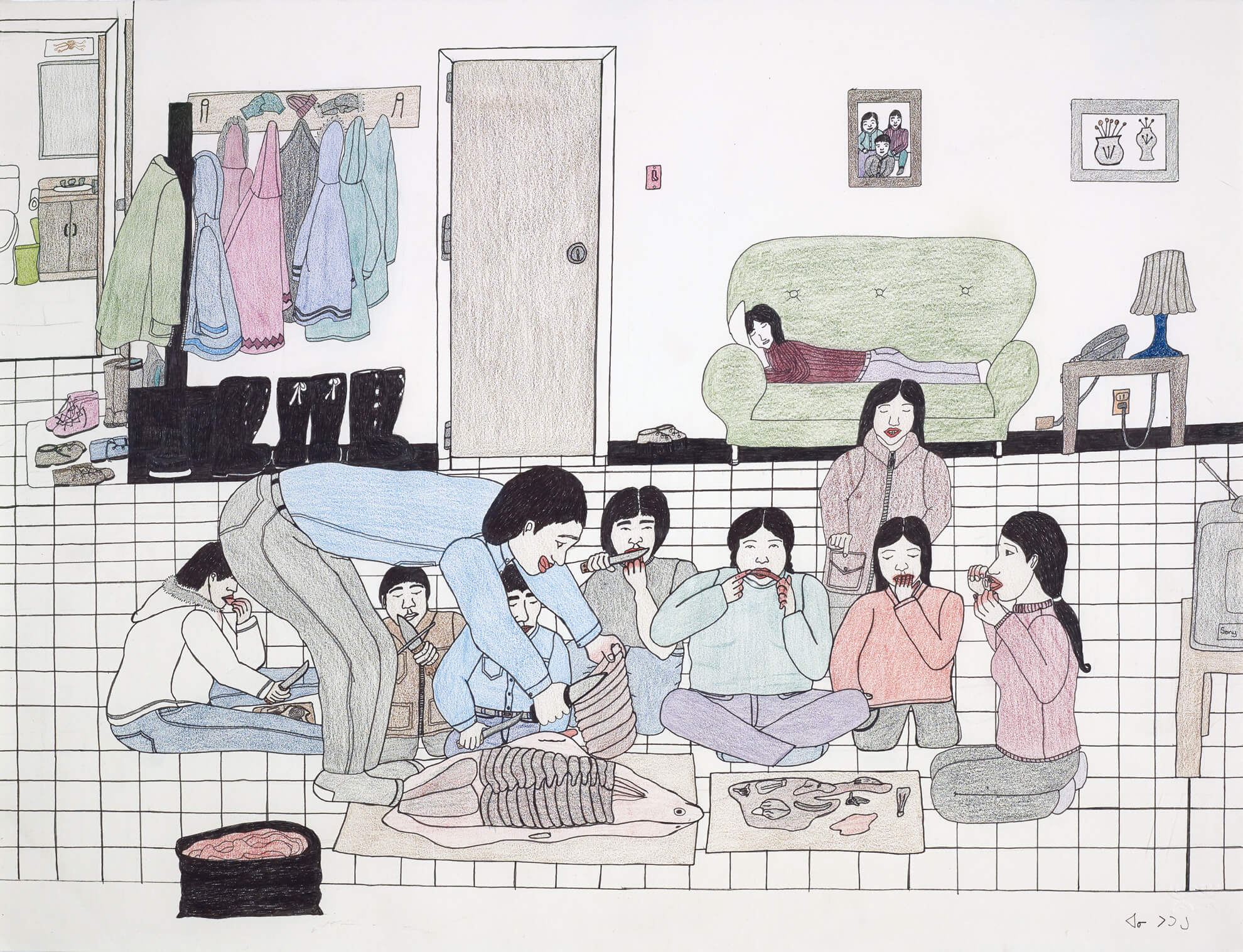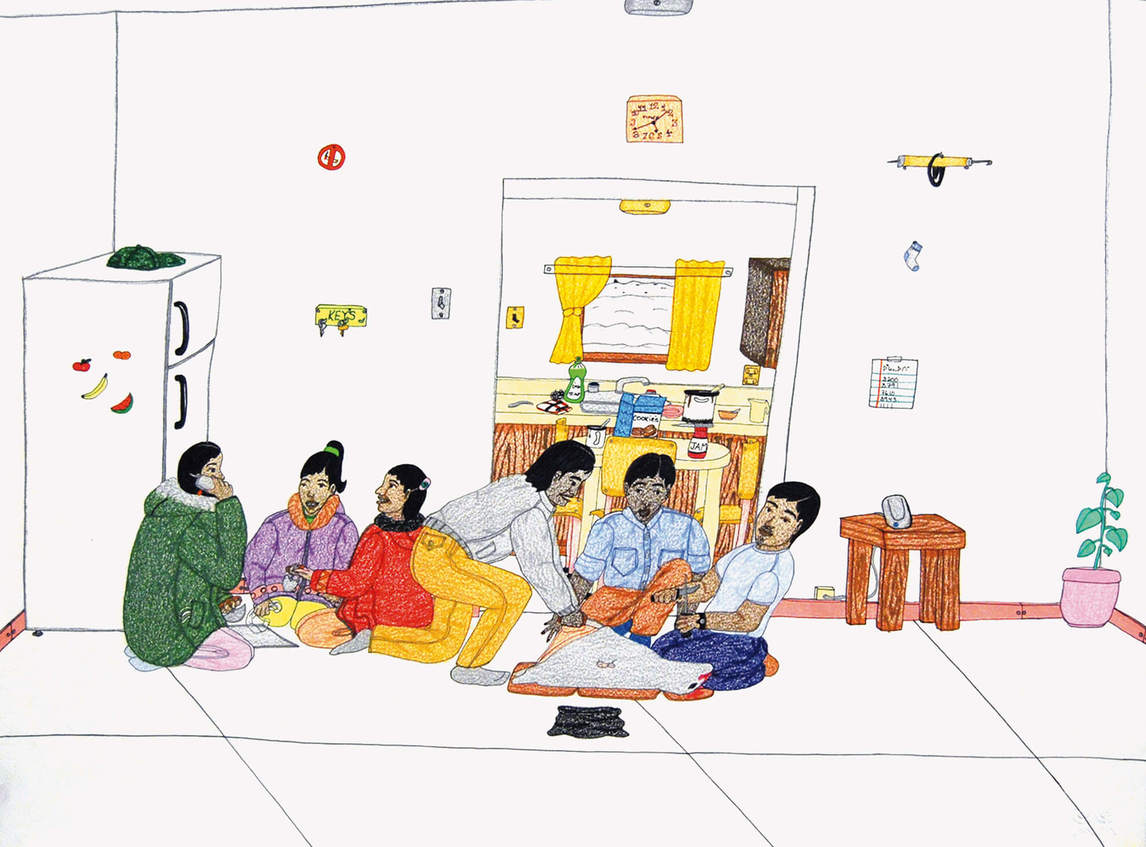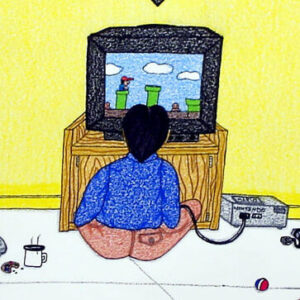Eating Seal at Home 2001

Annie Pootoogook, Eating Seal at Home, 2001
Coloured pencil and ink on paper, 51 x 66.5 cm
Collection of John and Joyce Price
In Eating Seal at Home, a glimpse of day-to-day realities in an Arctic community grabs the viewer and invokes ideas of a life in transition. In this drawing a family shares in the bounty of a seal hunt. The group sits cross-legged on the floor and eats fresh pink meat that they have carved from a splayed-open seal. The people appear happy and take joy in eating and sharing. It is a long-standing community tradition to share in the kill, and so the drawing depicts a traditional practice taking place within a modern setting.

Seal, like meat, fish, and berries, is considered traditional in Inuit Nunangat (the Inuit homeland). These foods are typically eaten while sitting on the floor; this practice is markedly different from the way people eat Southern (often processed) foods, which they buy at the store and eat while sitting in chairs around a table. Despite the contemporary elements of the interior, Annie Pootoogook directs viewers to the strength of a tradition—family gathering to eat or to play, as she also shows in Composition (Family Playing Cards), 2000–2001, in a circle on the floor—one that remains centred on sharing and socializing. The group sits together, arguably in defiance of the furniture in the background.
Annie’s early drawings are important, as they often hold the magic of what was fully realized in subsequent works, such as Three Men Carving a Seal, Three Women Cleaning, 2006. The theme of combining the old with the new, or tradition with contemporary life, is already present in Annie’s earliest works. Eating Seal at Home shows little or no use of linear perspective; however, it reveals an early attempt on the artist’s part to experiment and create an interior with the illusion of three-dimensional space. The floor is presented as a flat square pattern, with depth being shown through the placement of objects that include a container in the foreground, a television in the middle ground, and a couch in the background. Annie’s early drawings also introduce us to her iconography. In addition to the television, she includes a light switch, a lamp, and shoes at the door, careful to insert details of the everyday in the interior. These objects of daily life are repeated throughout Annie’s works, and this piece is therefore an important marker of her developing style.
This early drawing was exhibited in the group show The Unexpected at Toronto’s Feheley Fine Arts in 2001. It was quickly purchased by collectors John and Joyce Price of Seattle, Washington, who were fascinated by Annie’s original presentation of her lived experience. Their collection remains one of the most important private collections of Annie’s work.

 About the Author
About the Author
 More Online Art Books
More Online Art Books
 Acknowledgements
Acknowledgements